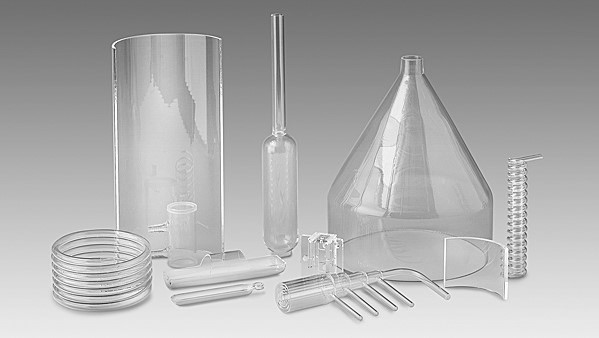
The performance of quartz glass is mainly affected by the raw materials and production process. If the purity of the raw materials is not enough, the quartz glass produced will have various problems. Bubble lines, impurities, high hydroxyl content, and severe crystallization will all lead to substandard performance. . If the process control is not strict, hydroxyl groups, internal stress, streaks and microstructural defects will appear, which will also reduce the performance indicators of quartz glass materials.
1.Impurities in raw materials
Alkali metal elements: Li, Na, K and other alkali metals have a strong fluxing effect in the structure of fused quartz glass, causing devitrification, deformation and other phenomena in high-temperature applications; secondly, alkali metals will affect the thermal properties of quartz glass properties and optical properties, reducing the service life of electric light sources, semiconductors, etc.; in addition, alkali metals can also increase the dielectric coefficient and dielectric loss of quartz glass, affecting the dielectric properties and mechanical strength of quartz glass.
Transition metal elements: Transition metal elements Fe, Cr, Mn, Ni, Cu, etc. have various oxidation states and often appear in certain colors, which have a particularly serious impact on the quality of fused silica glass. For example, trace amounts of transition metal elements will reduce the conductivity of fused silica glass, negatively affecting the reliability and predictability of the instrument. It will also cause stains or high-temperature discoloration, affecting the light transmission performance.
Elements such as Al, B and Ti: The contents of Al, B and Ti in quartz are directly related to the geology of the deposit. Al, B and Ti enter the quartz lattice to form strong chemical bonds and are the most difficult impurity elements to remove in quartz. Excessive content of these elements will seriously affect the crystallization behavior of quartz glass, causing the quartz glass to be hard and brittle and reduce its strength.
Inclusion impurities: Natural quartz usually contains mineral inclusions. Mineral inclusions and melt inclusions in quartz are extremely fine in particle size and tightly wrapped by quartz. It is difficult to remove them through mineral processing without destroying the quartz crystal. The impact of fluid inclusions on high-purity quartz is first manifested in the fact that fluid inclusions are rich in metal ions, which is one of the main factors affecting the purity of quartz.
2. Hydroxyl
The impurities and structure in quartz glass determine its physical and chemical properties, and the presence of hydroxyl groups changes the continuity of the quartz glass network structure, thereby affecting its performance. The presence of hydroxyl groups will reduce the chemical stability, structural strength, heat resistance and optical uniformity of quartz glass.
3. Bubble
The fluid inclusions will not completely explode during the quartz melting process, and the unexploded fluid inclusions before melting will form bubble defects in the fused quartz glass. The viscosity of fused silica is very high, making air bubbles difficult to remove. Therefore, quartz glass preparation needs to use raw materials with a small number of inclusions or blasted inclusions and low impurity content.
In short, there are two main aspects of poor quality of quartz glass. One is the purity of raw materials, and the other is the production process. We must start from the processing of quartz raw materials and the core technology of quartz glass production to improve the performance of quartz glass.
